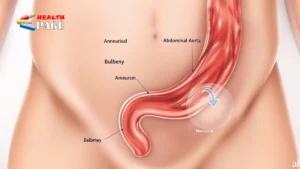Understanding Panic Attack ICD 10 Codes: Diagnosis and Classification
Panic attacks bring on a sudden, strong rush of fear or deep discomfort. These intense moments can hit out of nowhere. They make daily life tough for many people. Getting the right diagnosis matters for finding help. Let’s know everything about Panic Attack ICD 10.
The International Classification of Diseases, Tenth Revision (ICD-10) is a global standard. It helps classify health issues and diseases. These ICD-10 codes are vital for things like medical billing. They also help with research and tracking health conditions, such as panic attacks.
What is a Panic Attack icd 10?
Definition and Symptoms
Core Characteristics of a Panic Attack
A panic attack is a quick surge of intense fear or discomfort. This feeling peaks within just minutes. During an attack, you might feel your heart pound. Sweating, trembling, or shortness of breath are also common. Some people get chest pain or feel dizzy. You might even feel like you are choking. Feelings of unreality or being detached from yourself can happen. A big fear of losing control or dying often comes up. Tingling sensations or hot and cold flashes are also possible.
Differentiating Panic Attacks from Anxiety
Panic attacks often happen with other anxiety problems. Still, they are special events. Their sudden start and strong feelings set them apart. Not everyone who feels anxious will have a panic attack. And a single panic attack does not always mean you have panic disorder. Understanding this difference is key for proper help.
ICD-10 Codes for Panic Attacks
The Primary ICD-10 Code: F41.0
Understanding the F41.0 Code
F41.0 is the main ICD-10 code for Panic Disorder. It describes a condition with “episodic paroxysmal anxiety.” This code tells doctors, insurers, and researchers that someone has a diagnosed panic disorder. It helps track the condition for health data.
When F41.0 is Applied
Doctors use the F41.0 code when a patient meets specific rules. These rules are found in guides like the DSM-5. They look for repeated, unexpected panic attacks. They also check for worries about having more attacks. Or they look for big changes in behavior because of the attacks. A careful review helps doctors pick the right code.
Related and Differentiating ICD-10 Codes
Codes for Other Anxiety Disorders (e.g., F41.1 Generalized Anxiety Disorder, F40.1 Social Phobia)
Panic attacks can show up in other anxiety issues. For example, someone with generalized anxiety disorder (F41.1) might have them. Or a person with social phobia (F40.1) could too. Different ICD-10 codes point to these specific problems. It is important for doctors to tell the difference. This makes sure you get the right care for your main condition.
Codes for Panic Attacks as a Symptom (e.g., R41.0 Unspecified confusion, R06.0 Dyspnea)
Sometimes, panic-like feelings are just symptoms. They might not be part of a diagnosed anxiety disorder. In these cases, doctors might use symptom codes. For instance, R41.0 might be used for feeling confused without a clear cause. R06.0 is for shortness of breath. These codes are picked when a specific anxiety disorder is not found. Or when the symptoms come from another health problem.
Diagnosis and Assessment
Clinical Evaluation
Medical History and Physical Examination
It is vital to first rule out other medical issues. Conditions like thyroid problems or heart issues can mimic panic attack symptoms. Your doctor will ask about your health history. They will also perform a physical exam. This step helps confirm the panic attack diagnosis. It makes sure no other illness is causing your symptoms.
Psychological Assessment and Diagnostic Criteria
After ruling out medical causes, a mental health expert steps in. They use tools like the DSM-5. They talk with you about your experiences. This helps them understand your symptoms deeply. This process guides them to choose the most accurate ICD-10 code. Getting the code right means you get the best treatment plan.
The Role of Statistics and Data
Prevalence of Panic Attacks and Panic Disorder
Panic attacks and panic disorder are not rare. Many people deal with them. The National Institute of Mental Health (NIMH) reports that panic disorder is among the most common mental disorders. Knowing how many people face these issues helps health groups plan. It shows the widespread need for mental health support.
Impact on Healthcare Systems
Coding panic attacks and related disorders is more than just paperwork. It helps us see the full weight of mental health issues. This data shows how much mental health conditions affect healthcare. It highlights the need for more resources. Good coding helps governments and hospitals plan for care.
Treatment and Management
Pharmacological Interventions
Antidepressants (SSRIs and SNRIs)
Many doctors start with antidepressants for panic disorder. SSRIs and SNRIs are common first choices. These medicines help balance brain chemicals. They can reduce the number and strength of panic attacks. It often takes a few weeks to see the full effect.
Benzodiazepines
Benzodiazepines offer quick relief for panic attacks. They can calm intense symptoms fast. However, they are usually for short-term use. There is a risk of becoming dependent on them. They can also have side effects. Doctors carefully weigh these points when prescribing them.
Psychotherapeutic Approaches
Cognitive Behavioral Therapy (CBT)
Cognitive Behavioral Therapy (CBT) works very well for panic disorder. It teaches you to spot and change negative thought patterns. CBT often uses exposure therapy. This means facing feared situations in a safe way. It helps you learn that these situations are not dangerous.
Other Therapeutic Modalities
Other therapies can also help. Acceptance and Commitment Therapy (ACT) helps you accept difficult thoughts and feelings. Psychodynamic therapy looks at past experiences. Both can give you new ways to cope. They can help you understand your panic attacks better.
Living with Panic Attacks: Actionable Tips
Coping Strategies
In-the-Moment Techniques
When a panic attack hits, try some simple steps. Deep breathing can slow your heart rate. Grounding techniques help you focus on your surroundings. Look for five things you can see, four you can feel, three you can hear. Mindfulness also helps you stay in the present moment. These tools can make an attack feel less overwhelming.
Lifestyle Modifications
Changes in your daily life can reduce panic attacks. Managing stress is important. Get enough sleep each night. Regular exercise can lower anxiety. Eating healthy foods also plays a part. These healthy habits build a stronger base for your mental well-being.
Seeking Support
The Importance of Professional Help
If you have panic attacks, please talk to a doctor. Getting a diagnosis and starting treatment is a big step. Qualified healthcare professionals can guide you. They help you find the best path to feel better. You do not have to handle this alone.
Support Networks
Connecting with others who understand can be helpful. Peer support groups offer a safe place to share. Family and friends also play a crucial role. Their understanding and support can make a big difference in your recovery journey. Reach out to those who care about you.
Conclusion
Panic attacks involve sudden, intense fear. The F41.0 code is how doctors classify Panic Disorder in the ICD-10 system. Knowing this code is important for many reasons. Accurate diagnosis is vital for finding the right treatment. It points you toward feeling better.
Thankfully, many effective treatments exist for panic attacks. From medicines to therapy and coping strategies, help is available. With the right support, you can learn to manage your condition. You can get back to living a fuller life.


